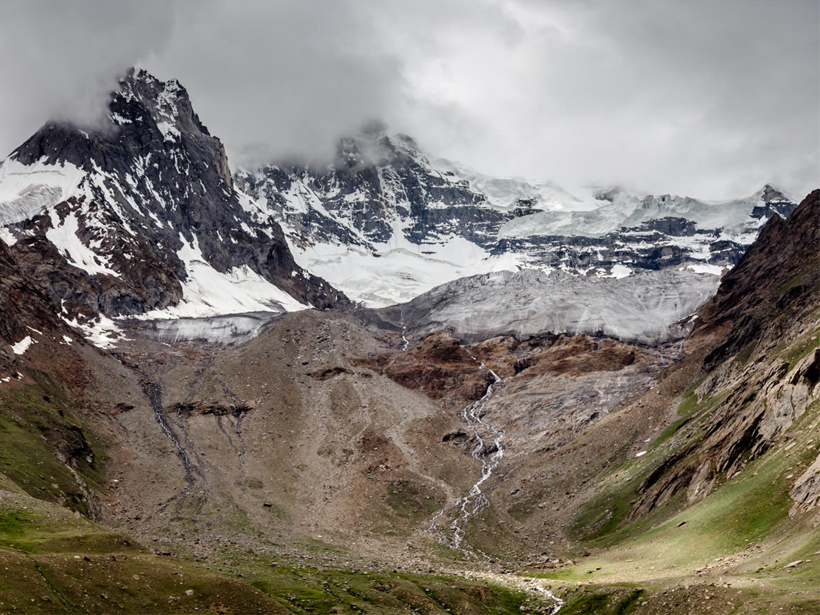Source: Journal of Advances in Modeling Earth Systems (JAMES)
Cold, barren, and scarcely populated, Earth’s northern high latitudes (NHLs) might seem static or bleak to the untrained eye, but below the surface the frozen soils are changing. Permafrost regions—where the soils remain frozen all year round—are on the decline. This process has a positive feedback on the climate system: As the frozen soils thaw, it releases greenhouse gases like methane and carbon dioxide into the air, further warming the planet and exacerbating the cycle.
But assessing the extent of permafrost thaw remains a challenge for scientists, often because of the incomplete understanding of how much permafrost there is or was to begin with. Here Barman and Jain use a land surface model—which includes several key processes important for NHLs—to come up with a more rigorous estimate of how much permafrost is in the NHLs and how much it has changed in recent decades. The addition increases the total NHL permafrost area by 9.2 million square kilometers, with a range of 2.9–12.3 million square kilometers (without and with these processes). The 424% increase is generated because of the inclusion of four new processes: energy exchange between shallow and deep soils (down to ~50 meters), the effect of organic carbon in the soil, wind compaction of snow depth, and depth hoar formation in snow. In contrast, the simulated permafrost area differed by 2.3 million square kilometers using different climate data sets and by 0.7 million square kilometers using substantially different land cover data sets.
Modeling the soil in greater depth made the biggest contribution to the fourfold increase. According to the results, tracking the heat exchange vertically through the soil column seems to be very important for building accurate models. However, the researchers point out that in areas where the tundra is capped by a root zone from active surface vegetation, “the influence of deep soils becomes minimal.” In these cases, the other new processes play a more important role.
Soil organic carbon had the next largest influence on the model, insulating the ground by keeping the heat out during the summer. Snow compaction also played an insulating role. Like a flattened down jacket that’s been washed too many times, when winds pack the snow tighter, heat escapes up from the ground more easily, cooling the soil (relatively). Including depth hoar in the model actually reduced the amount of permafrost but only by a meager 0.8 million square kilometers. The authors attribute the net warming effect to warmer soil temperatures brought about by an insulating effect on snow—essentially the opposite effect of wind compaction. The model also proved very sensitive to changes in annual air temperatures: A change of 0.5°C changed the permafrost area by 2.3 million square kilometers.
The authors note that their model is far from complete and there are limitations, especially its inability to account for sporadic and isolated permafrost patches that occur over areas too small to be resolved individually. The results demonstrate overall the importance of soil and snow biogeophysics in calculating permafrost area. The team argues that as climate-driven uncertainties increase into the future, these relations are likely to become even more influential. (Journal of Advances in Modeling Earth Systems (JAMES), doi:10.1002/2015MS000504, 2016)
—David Shultz, Freelance Writer
Citation: Shultz, D. (2016), Permafrost area is sensitive to key soil and snow physics, Eos, 97, doi:10.1029/2016EO047621. Published on 11 March 2016.
Text © 2016. The authors. CC BY-NC 3.0
Except where otherwise noted, images are subject to copyright. Any reuse without express permission from the copyright owner is prohibited.

